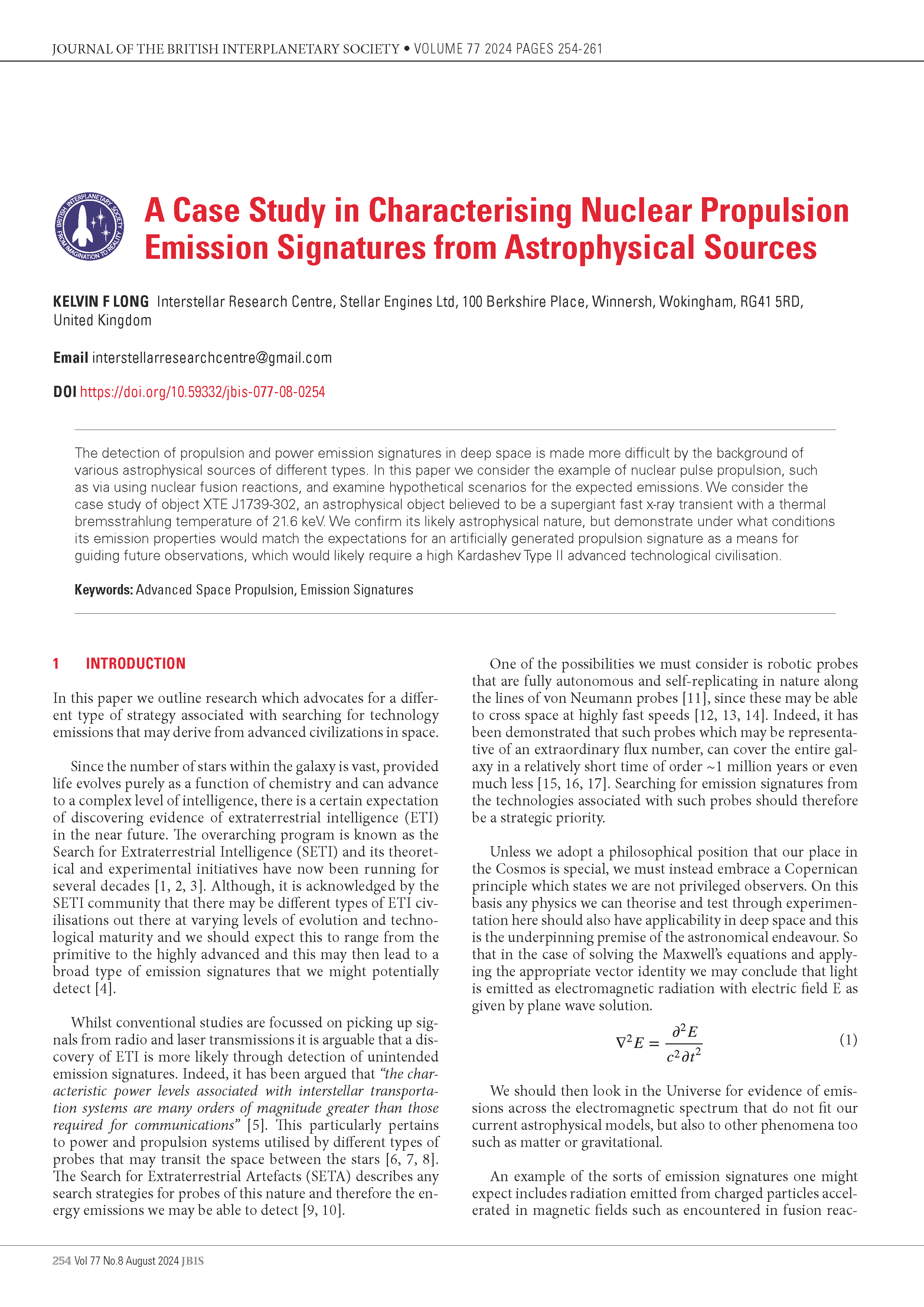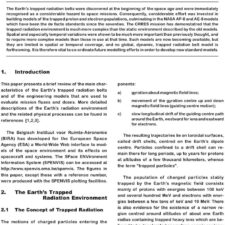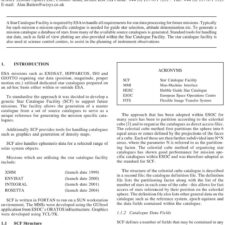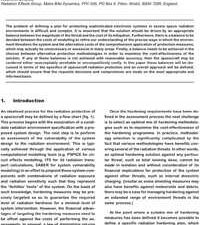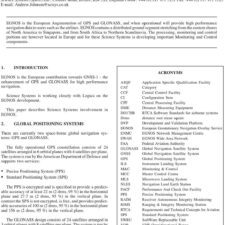A Case Study in Characterising Nuclear Propulsion Emission Signatures from Astrophysical Sources
£5.00
Kelvin F. Long
2024.77.0254
DOI: https://doi.org/10.59332/jbis-077-05-0254
The detection of propulsion and power emission signatures in deep space is made more difficult by the background of various astrophysical sources of different types. In this paper we consider the example of nuclear pulse propulsion, such as via using nuclear fusion reactions, and examine hypothetical scenarios for the expected emissions. We consider the case study of object XTE J1739-302, an astrophysical object believed to be a supergiant fast x-ray transient with a thermal bremsstrahlung temperature of 21.6 keV. We confirm its likely astrophysical nature, but demonstrate under what conditions its emission properties would match the expectations for an artificially generated propulsion signature as a means for guiding future observations, which would likely require a high Kardashev Type II advanced technological civilisation.
Keywords: Advanced Space Propulsion, Emission Signatures

